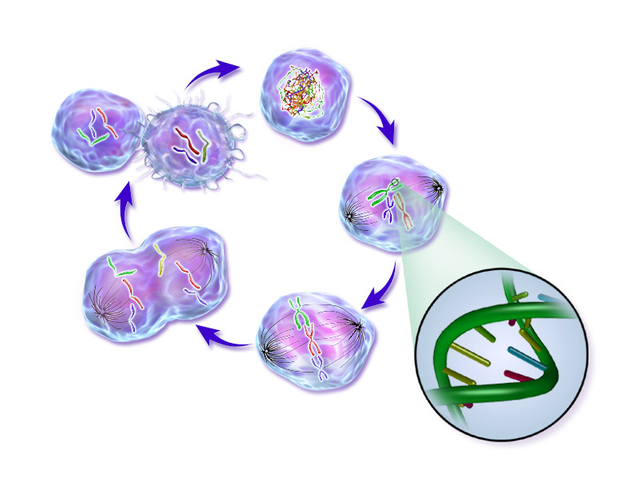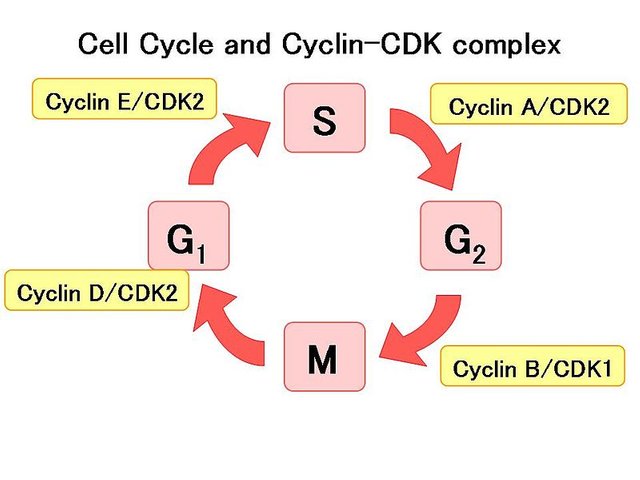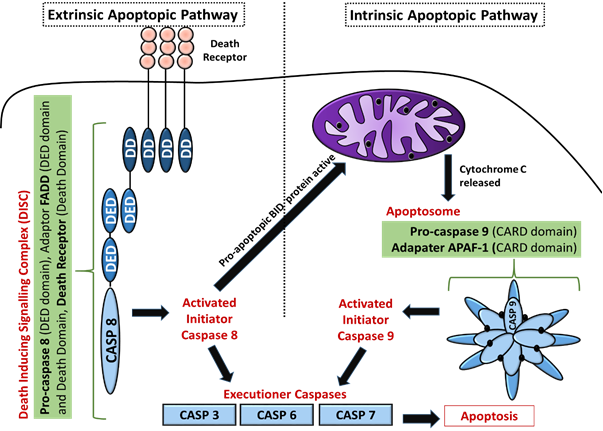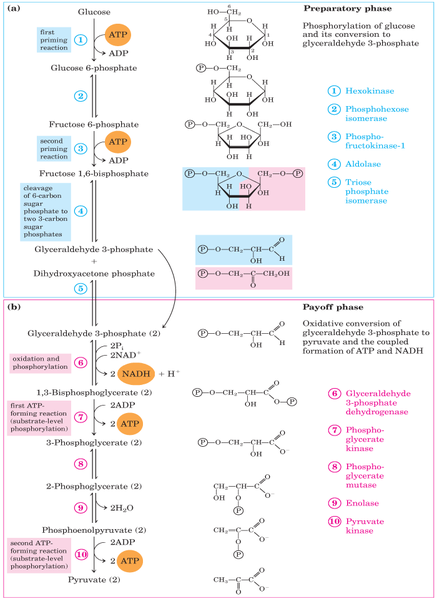WHO SAID CANCER CANNOT BE TOTALLY TAMED? the amino acid -Aspartate has been implicated!
Incorporation of academic research is one of the best that has happened in the education sector. Recently I have been following a research on cancer being conducted by a team of research scientists at the Massachusetts institute of technology (MIT),USA.
The recent discovery really attracted a lot of scholars and this has made great impact to the study of cancer. It has opened more opportunities for further research about the disease known as cancer ♋ .
The association of the amino acid Aspartate in the growth of a tumour cell is what I want to unveil. This is really a wonderful discovery and if this is fully explored we might be closer to getting rid of cancer cell once and for all.
A lot has been said and written about cancer also known as neoplasia, a devastating disease that has so far plagued human existence. The most dangerous aspect of this disease is its onset without prior notice. Failure to detect it at its early developmental stages and permanent cure most times are few of the major limiting factor in its treatment and diagnosis.
Cancer in general layman simple definition simple means abnormal or uncontrolled proliferation and growth of a cell . All cells are subject to Regulation either by hormones or several inhibitory mechanisms and check points to ensure balance and moderation in all its cellular activities.
The dysregulation of cell proliferation is the key to the development cancer.
The cell cycle
The normal cell cycle is divided into Mitotic phase (M phase) a period during which the cells divides and an interphase stage during which the chromosomes are duplicated thus leading to cell growth prior to division. This interphase is further divided into four stages, G1 phase in which the cell begins to produce all necessary materials it needs for replication, a S phase during which DNA replication occurs and G2 phase in which all the cell organelles are produced leading to an increase in the volume of the cytoplasm.
These stages of the cell cycle are controlled by two major check points which acts to control the entry of each stage. The regulatory mechanism is made of combinations of cyclin dependent protein kinases (Cdk) and cycling proteins. The Cdk does the job of phosphorylating protein target while the cyclin regulate this Cdk by binding to it. If a damaged cell by-passes the check point at the G1 phase, this leads to abnormal production of cells which can be in form of cancer.
There is a checkpoint in the late G1 phase and this is known as the restriction point. Any cell that passes or escapes this G1 phase checkpoint is most likely to produce abnormal cells.
These points checkmate the condition of the cell and in a situation where the cell DNA is damaged, the body makes an attempt to repair this damage. If in an attempt to repair the damage, it fails then the normal thing that happens is that the cell is destroyed through the apoptotic pathway (a regulated physiologic cell death).
How does the body system activate the apoptotic pathway to prevent cancer ?
In the event of any DNA damage, this damage is occasionally sensed detected by a protein p53 in the body. This protein after sensing or detecting the damage responds immediately
by activating apoptosis by increasing the cell BAX protein level. This BAX in turn increases Cytochrome c release from the mitochondria into the cell cytoplasm.
The released Cytochrome c then binds to cytoplasmic protein called Apaf-1 which finally leads to the activation of caspases - the main enzyme that initiates apoptosis. Once this enzyme is activated, disintegration of the cell begins.
The apoptotic bodies produced at the end of this stage are mopped up by macrophages. P53 can also directly on it's own shut down the cell cycle to ensure that the damaged cell doesn't continue to divide and with this, mutated or abnormal cells are prevented from further proliferation.
This is just a simple mechanism involved in the regulation of the body system when it comes to issue of damage to the DNA or any genetic material in the body system that have the potency of causing cancer.
The big question
Since all these tightly controlled checkpoints and mechanisms are used by the body to checkmate damaged cells, how then does cancer proliferate without been shut down by the body system.
In cancer, the reverse is the case, all the mechanism that checkmate cell activities are totally bypassed, the cancerous cells can even go as far as producing new blood vessels through the proces of angiogenesis when they don't get enough oxygen or nutrients they require for their unregulated proliferation.
They in this process deprive normal cells of their basic nutrients requirements. Cancer cells override the checkpoint in cell cycle thereby allowing the abnormal cells continued proliferation.
Glycolytic pathway and the Warburg effect in cancer cells
You would agree with me that, all biochemical or biological processes in one way or the other require energy in the form of Adenosine Triphosphate (ATP) to keep the system running.
This ATP is gotten through the break down of several substrate by the catalytic action of many enzymes. Take for example, the glycolytic and the tricarboxylic acid pathway which is involved in the catabolism of glucose to private to produce a net total of 2ATP.
The penultimate product,
phosphoenol pyruvate is converted to pyruvate by an enzyme known as pyruvate kinase further breakdown of this pyruvate through the process of cellular respiration in the mitochondria in a pathway called tricarboxylic acid cycle (TCA) produces a net total of 38ATPs needed by the human body for various metabolic processes like respiration, excretion, digestion etc.
The pyruvate kinase as we can clearly from the picture see is the needed for final conversion of glucose to pyruvate thus
producing energy in the form of ATP. If this enzyme is deficient, production of atp will be impeded and this consequently will lead to termination of most metabolic processes in a a normal cell. Normal cells rely on the oxidative breakdown of pyruvate by the enzyme called pyruvate dehydrogenase to produce oxaloacetate, further reaction in the mitochondria yields the energy required by cells.
Now in cancer cell, they do not use the above metabolic pathway to generate energy that will fuel their proliferation, they use a less efficient pathway that produces less energy.
Cancer cells metabolise glucose without depending on oxygen through the process of fermentation. The end product of the reaction is lactate. Whether oxygen is present or not, the cancer cell can produce a lactate. This phenomenon which is most associated with cancerous cells is what is known as the warburg effect.
Even in the presence of adequate oxygen tension, they do not metabolise glucose oxidatively. But does it mean that it is only glucose that the cancer cells use as their sole source for energy derivation? Does it mean there are no other sources of energy? Well, contrary to what has been believed over the past years, it has been proven that amino acids excluding glutamine were actually the major energy source for cancer cells.
Aspartate, the major amino acid needed for cancer cell proliferation
The fact remains that cancer cells use up glucose extremely very fast and at a very high rate, but the product produced is used in the production of amino acids which according to a research done by MIT in 2016 implicated the amino acids as the major contributing factor to cancer cellular growth.
In as much as cancer cells produce lactate from fermentation of glucose molecules in either the presence or absence of oxygen, they also use a key amino acid- aspartate. This was affirmed in the recent research done at MIT, 2018.
During their course of research, they discovered that cancer cell proliferate faster when placed in-vitro than when placed in-vivo and reason being that the cancer cells thrive more in the presence of oxygen.
One interesting thing I learnt about this cancer cells through this research at MIT is that, they used asparte in-vivo to fuel their proliferation. So this means that, if their use of aspartate is blocked or inhibited, their rate of growth will be in jeopardy.
They use amino acids to fuel their cellular proliferation. Though we would not in totality exclude the vital role of glucose in the metabolic activities in cancer cells but the main fact is that amino acids played a major role in cancer cell growth.
This brings hope to the research about cancers and with further and in-depth research about the mechanism of transport of the amino acid-aspartate, we might not have to worry about the cancer any more.
My view and opinions
Since the amino acid aspartate has been identified as a key major factor in the proliferation of cancer cells and its removal or inhibition causing a reduction in the rate of cellular proliferation of the cancer cells, production of drugs that will target the receptor sites for aspartate in the cancer cell will go a long way in halting the cancer cell.
If the receptors are blocked by the drugs, the cancer cells will not be able to utilize the aspartate.
Conventional drugs like cisplastine and cyclophosphamide which are associated with serendipity have been used in the treatment of cancer before now. Even Doxorubicin, vincristine, methotrexate, florouracil etc. have also been used but the negative side effects which they have on the body system has been a major challenge.
The use of anti-cancer drugs has a double edged-sword effect, most anti-cancer drugs kill both abnormal cells and normal cells as well and this has been a major challenge in cancer therapy. In as much we are trying to kill and stop cancer growth, it also expected that the normal cells be taken into consideration.
Conclusion
Cancer is a disease that can affect any age, it is not restricted to any particular area of the body as it can affect any cell of the body. The amino acid aspartate is a major key player in cancer cell growth, but when drug therapies that are targeted at the amino acid aspartate are employed, cancer cell growth will reduce and if possible totally halted.
Thanks for reading
References and further reading
•MIT - how cancer cell fuel their growth
•Cell cycle- Essential Haematology 5th edition by A. V. Hoffbrand et-al. Page 9.
•Wikipedia - Warburg effect
•MIT - asparte as key limiting enzyme in cancer growth
•cancer cells
•medical news today

If you write STEM - Science Technology Engineering and Mathematics related post , consider joining @steemstem and @stemng.




Wyclef Jean's If I was President lyrics
I really do want a cure for cancer, at least we can manage AIDs
Lol..... Sir green
Yeah we can but I would even prefer none to be in existence. Both are almost death sentence unless there is supernatural intervention.
Question: there are other recent drugs that doesnt kill other normal cells. Have you heard of targeted cancer therapy?
Nice post, i enjoyed it
Wao.....thanks for that added knowledge
This post has been voted on by the steemstem curation team and voting trail.
There is more to SteemSTEM than just writing posts, check here for some more tips on being a community member. You can also join our discord here to get to know the rest of the community!
Hi @cyprianj!
Your post was upvoted by utopian.io in cooperation with steemstem - supporting knowledge, innovation and technological advancement on the Steem Blockchain.
Contribute to Open Source with utopian.io
Learn how to contribute on our website and join the new open source economy.
Want to chat? Join the Utopian Community on Discord https://discord.gg/h52nFrV